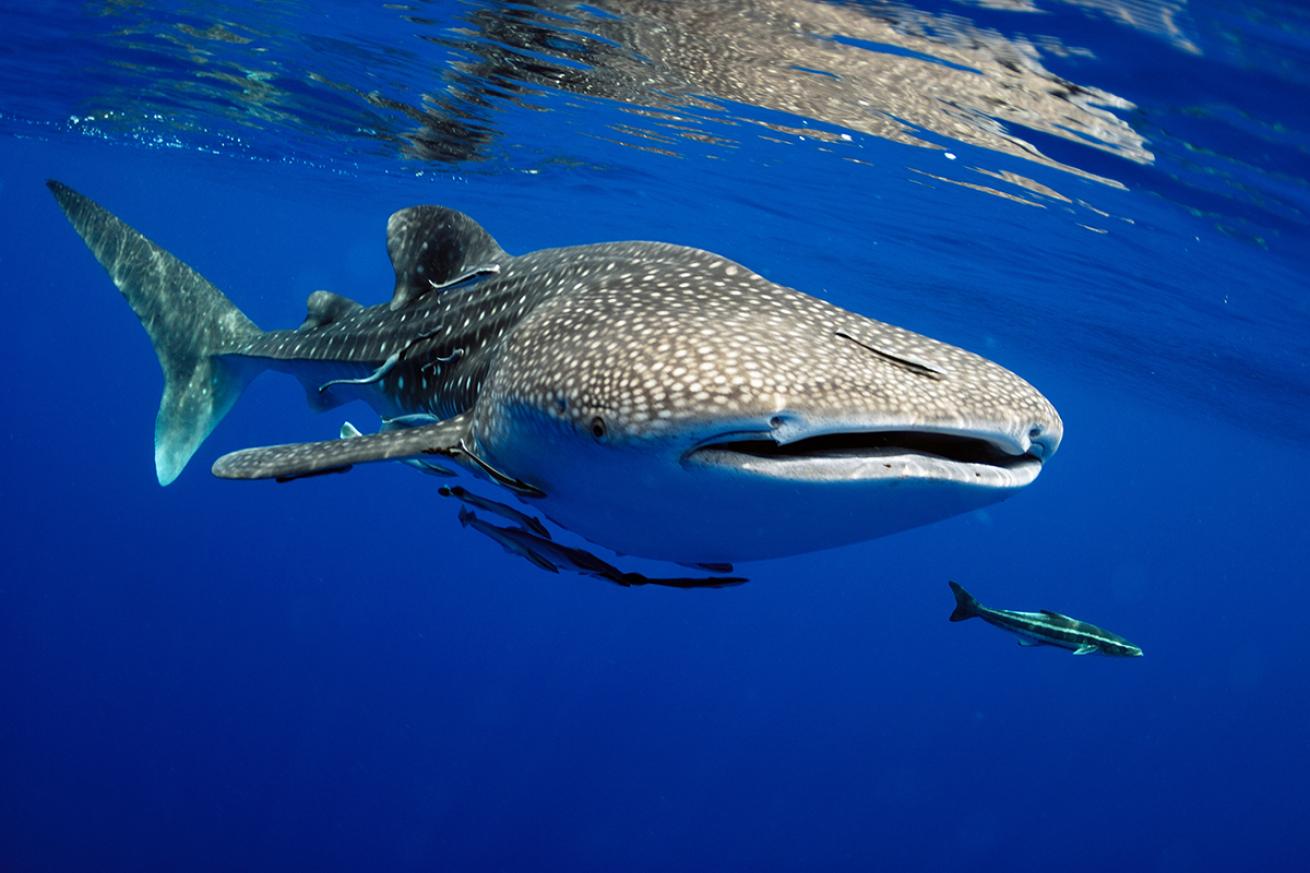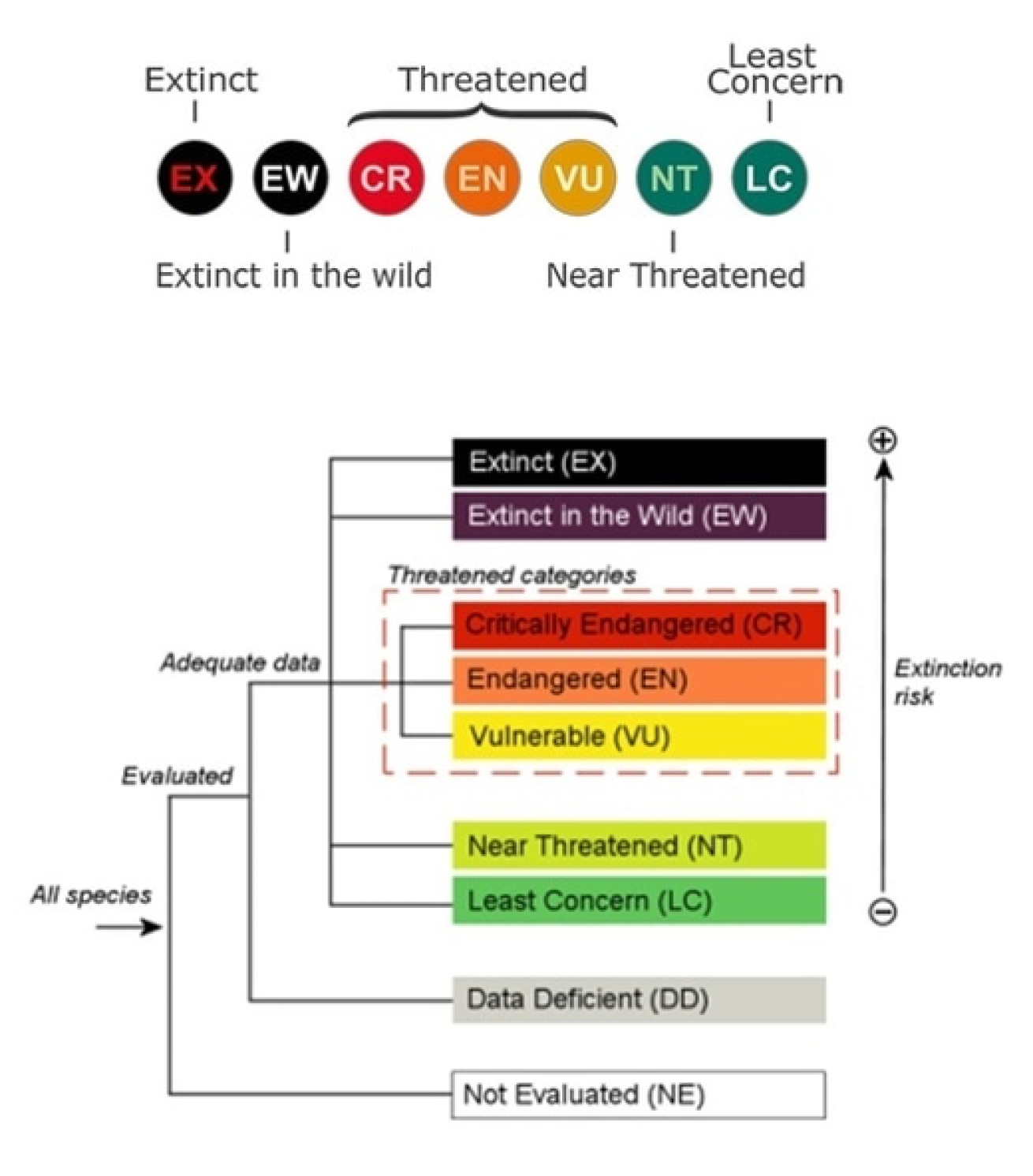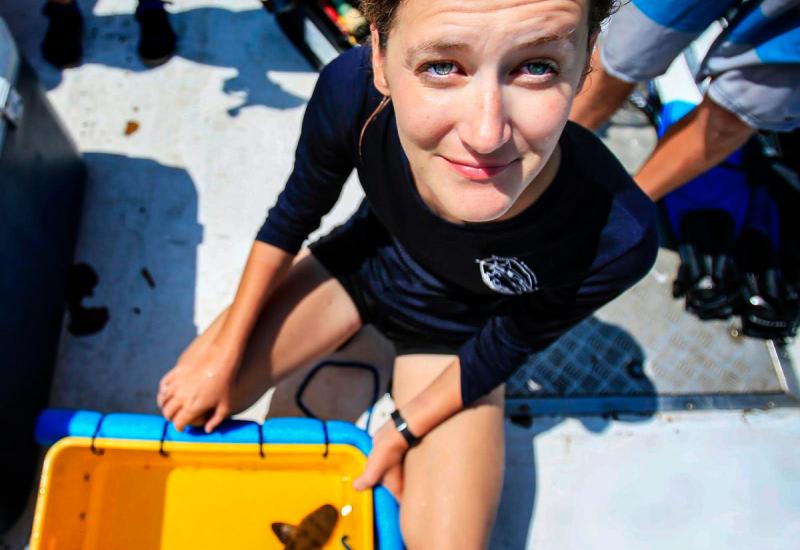What Is the IUCN Red List?

Shutterstock.com/Chainarong PhrammaneeAn IUCN assessment is not a legal status; these assessments are meant to inform policy change by summarizing scientific evidence that a particular species.
Quick—how many species of sharks and their relatives are threatened with extinction? Many conservation-minded scuba divers know that the answer is about one-quarter of them. But where does that number come from, and what does it mean (and not mean?). And who calculated it? In this column, I’d like to introduce you to a group you should know: the International Union for the Conservation of Nature (IUCN), and their associated Red List of Threatened Species.
The IUCN Red List, which started in 1964, is a series of scientific assessments of how threatened different species are. So far, IUCN has assessed 116,000 species of plants and animals! The Red List has a series of specialist groups, composed of scientific experts knowledgeable about the population status of species of interest. That statistic about how many species of sharks and their relatives are threatened came from the Shark Specialist Group, for example, and was published here.
There are several categories of Red List assessment, illustrated graphically below. The most common category is “Not Evaluated,” which means scientists haven’t assessed this species yet. Next is “Data Deficient,” which means there just isn’t enough information to make any kind of scientific evaluation. This generally does not mean that a species is in great shape. Often, “we don’t have a lot of data on their populations” means populations are not high enough to study. It is important to note that Data Deficient absolutely does not mean “we know absolutely nothing about this species and any new piece of information is helpful for conservation,” which is something I see scientists without IUCN training and non-expert ocean enthusiasts say a lot. Data Deficient just means that there isn’t long-term population trend data.

Credit: The International Union for the Conservation of Nature, "IUCN Red List categories and criteria," version 3.1, second edition"Everyone should know that an IUCN Red List assessment isn’t a guess and isn’t an opinion." - Dr. David Shiffman
Next is “Least Concern,” which means that the best available scientific data suggests that the species is in pretty good shape. “Near Threatened” essentially means worse than Least Concern, but not one of the threatened categories of “Vulnerable,” “Endangered” or “Critically Endangered,” which are each increasingly bad. It’s important to note that you should not group species that are Near Threatened with the threatened categories, such as “a certain percentage of species are threatened or Near Threatened.” This would be misleading because Near Threatened explicitly means not threatened. The worst is “Extinct” (none anywhere) or “Extinct in the Wild” (none anywhere except in captive breeding facilities). A thing that I want to stress here is that each of these categories has technical, scientific, mathematical, quantifiable definitions, which nerds can read about here. But everyone should know that an IUCN Red List assessment isn’t a guess and isn’t an opinion.
Specialist groups also update their assessments regularly, because conditions in the real world change! The Shark Specialist Group, co-run by my former boss Dr. Nick Dulvy, is in the midst of reevaluating the conservation status of sharks and their relatives, so get ready to learn a new stat if you’ve memorized “one-quarter of all sharks and their relatives are threatened.” (I can’t tell you what the new number is yet, but it’s fair to say that things aren’t looking up for sharks globally at the moment.) I currently work with the IUCN Tuna and Billfish Specialist Group, which is also reassessing the status of all tunas and billfishes. It’s a very technical, rigorous, time-consuming process!
So what does an assessment of threatened actually mean? It means that the best available science suggests that this species is in trouble, and that some sort of conservation action is needed. An IUCN Red List assessment is not the same thing as a designation of threatened or endangered under something like the U.S. Endangered Species Act; an IUCN assessment does not inherently carry any kind of force of law behind it. These assessments are meant to inform policy change by summarizing scientific evidence that a particular species is in trouble and sometimes recommending specific policy solutions, but are not policy documents themselves. For example, an assessment may note that a species is Endangered and declining because of bycatch, and note that the fishery responsible has no rules in place currently to fix this. It may recommend such rules, but there is no legal requirement for the rules to be enacted.
Want to learn more? Browse the IUCN Red List database and see what it says about your favorite species of marine critter. Each assessment also contains a detailed review of the species’ biology and ecology. And if you want to learn a lot more, you can take the free course to become IUCN Red List trained yourself here. You can also follow IUCN Red List specialist groups and their experts directly on social media—you can see many of them on my Twitter list of ocean experts accessible here.
In summary, the IUCN Red List is a collection of the best available scientific data analyzed and summarized by an international team of experts—such an assessment is not an opinion and not a guess. But such an assessment does not inherently carry the force of law, and IUCN Red List Endangered status doesn’t mean the same thing as being considered endangered under the U.S. Endangered Species Act.
About Dr. David Shiffman
Dr. David Shiffman is a marine conservation biologist specializing in the ecology and conservation of sharks. An award-winning public science educator, David has spoken to thousands of people around the world about marine biology and conservation and has bylines with the Washington Post, Scientific American, New Scientist, Gizmodo and more. Follow him on Twitter, Facebook and Instagram, where he’s always happy to answer any questions about sharks.
About Science Stop with Dr. David Shiffman
Before you surface from a deep scuba dive, you make a safety stop. Before you take a deep dive into the complicated world of ocean conservation, I encourage you to make a science stop by reading this column. The global environmental challenges we face can seem overwhelming, and concerned citizens, especially people like scuba divers who love spending time in the ocean, want to help do their part to fix these problems.

Josh LibermanDr. David Shiffman
However, with lots of conflicting, misleading or just plain wrong information out there about environmental problems and how you can help solve them, it can be hard to know how to help. In some cases, well-intentioned but misinformed activists not only fail to help solve a problem, but can actually make the problem worse, or harder to solve! Put simply, if we’re going to fix the massive problems facing the ocean, the details matter, and those details can be confusing! In this monthly column, my goal is to teach you the true scientific facts behind some of the most pressing threats facing the ocean and the solutions experts believe will help solve them. I will also try to dispel common misconceptions about these threats and their solutions.
The views expressed in this article are those of David Shiffman, and not necessarily the views of Sport Diver or Scuba Diving magazines.
More Science Stop:










